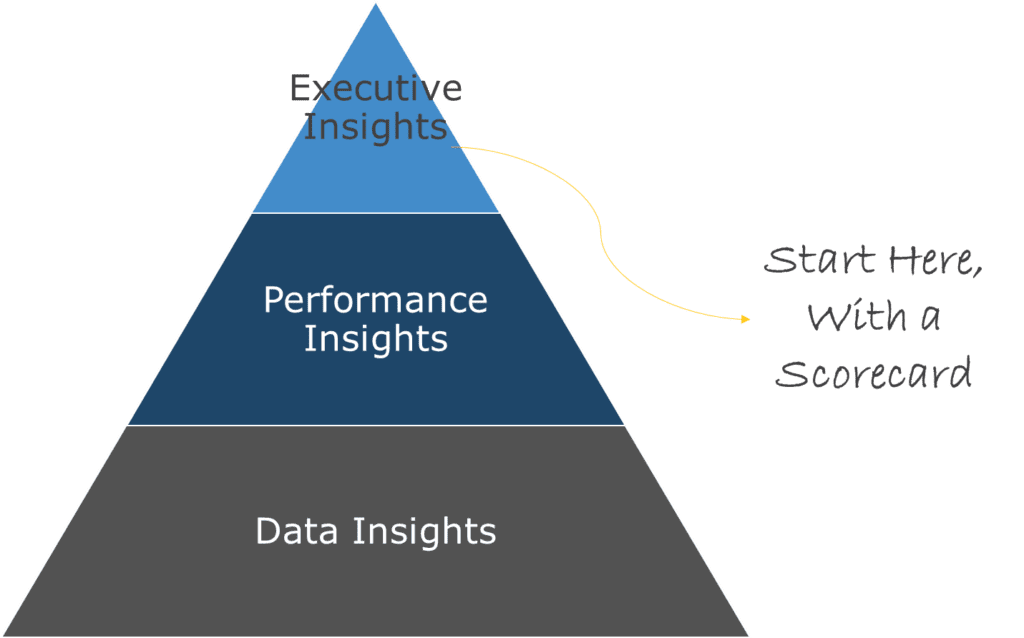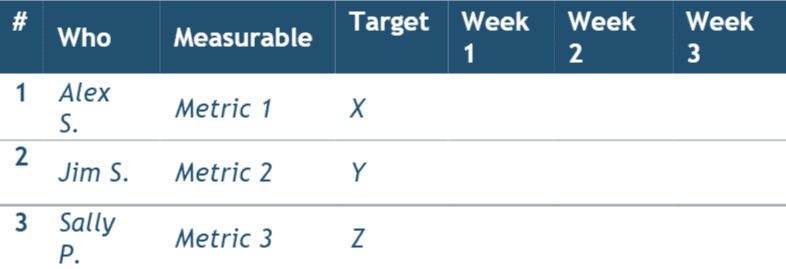The theory is that by managing by walking around, a leader can do a better job. Inspire employees. Communicate objectives. Improve productivity. Increase quality.
These are things that every business wants. It’s important to have a human element to business leadership.
But beware, managing by walking around can be at trap for business owners.
This management approach is difficult to scale, hard to delegate, and can create more confusion than clarity. If MBWA is your only management approach as a business owner, you may be walking around forever.
Business owners need to add other ways to manage. One way is to work from a solid foundation of insights created from business data.
This way, you can increasingly Manage By Sitting Around as the business owner, when it suits you.
Here’s how to proceed, and why you want to add Managing by Sitting Around (MBSA) to your leadership toolbox.
Using Your Data to Manage by Sitting Around
The data within your business is the key to this approach.
There is more data created in the world as each year goes by. What we want, is a way to capture it effectively and turn it into insights you can use.
It is easiest to think about three types of data that you can use.
Executive Data – the data to create the critical insights you need as a business owner. This data lets you measure progress towards strategic goals. It also lets you check key operational and financial metrics.
Performance Data – the more detailed data to track how each business division is working. It let’s you see progress towards goals for teams and individuals.
Process Data – the detailed, transactional data created by your key business functions. This data is generated minute by minute in operations, marketing, sales and manufacturing. Process data can be assessed in real time to optimize the activities in your business as they are happening.

Start With A Well-Designed Executive Scorecard
There is a famous business saying – whatever gets measured gets managed. We will start by making sure that you can measure strategy and operations.
The good news is, there is a proven tool for executives to get insights from data. It’s called a scorecard.
The Scorecard approach has been around for a long time. It’s also known as dashboard, metrics, measurables, key performance indicators (KPIs), and so on.
Call it what you like, it’s a one-pager of numbers that can tell you at a glance how your business is doing.

Scorecard Must-haves
#1 – Pick what to measure. A great way to choose measures comes from Gino Wickman in his book “Traction”. He call’s it the desert island test. Simply imagine that you are on a desert island and unreachable. You get a one-pager periodically, with a few numbers on it to tell you if your business is surviving and thriving. What are those numbers? These are your scorecard measures.
(Less is more here. You want 7-15 max measures on this sheet. You can help your team to create their own scorecards separately to capture performance insights.)
#2 – Decide who is accountable for each
Choose a person who is responsible for this number. This is the person who will take full responsibility for this number and is incented by its results.
Note: If you don’t have a Who column, then all measures are just the business owners’ responsibility.
#3 – Set a goal for each category
These goals should flow naturally from your strategy and plans.
By now, your scorecard should look something like this…

#4 – Set up your scorecard creation process
Your scorecard creation process will usually start as one person being responsible to assemble it. They will collect this information and measure it at an agreed upon interval.
Technology can be your friend here and simplify scorecard creation and distribution. I recommend beginning manually however in order to truly understand your scorecard.
#5 – Add your scorecard to your executive meetings
Set a recurring meeting, ideally weekly, where your scorecard is reviewed. Check the performance for the goals you’ve defined to see if strategy and operations are on track. Look at trends and patterns. Use these insights to recognize issues and opportunities that are emerging.
The Benefits of Using Data to Run Your Business
Using your data to create actionable insights will help you build a stronger business.
Benefits include:
- Improve you processes, and fill in the process gaps
- Enables delegation and removes reliance on the owner
- Let’s you manage by sitting around by times, instead of walking around
- Allows you to run you business based on fact, instead of being a business running on HiPPO (Highest Paid Person’s Opinion)
- Improves role clarity and accountability. Allows you to be clear on the ‘One Thing’ of top priority for each person on your team
- Ultimately increases your personal freedom as a business owner


